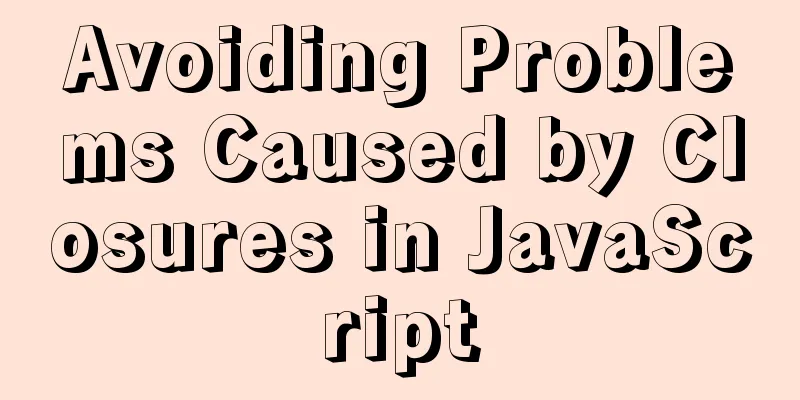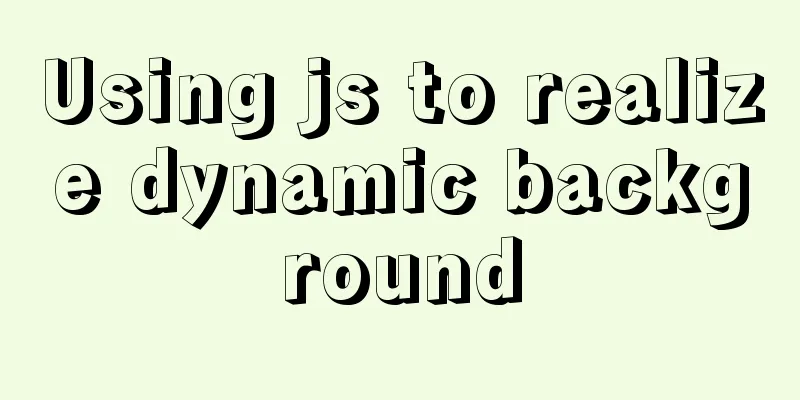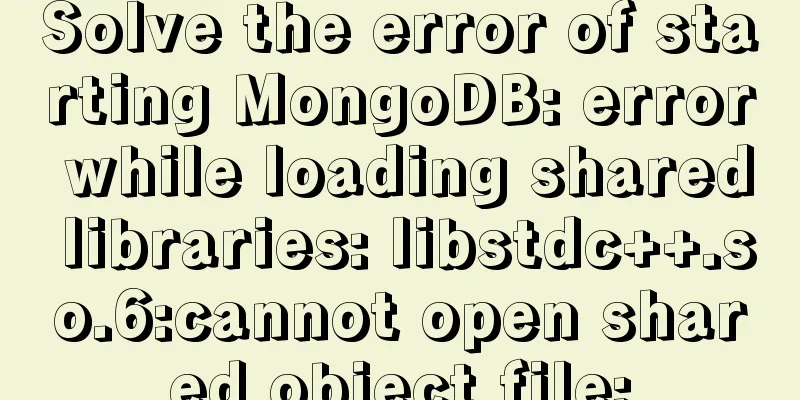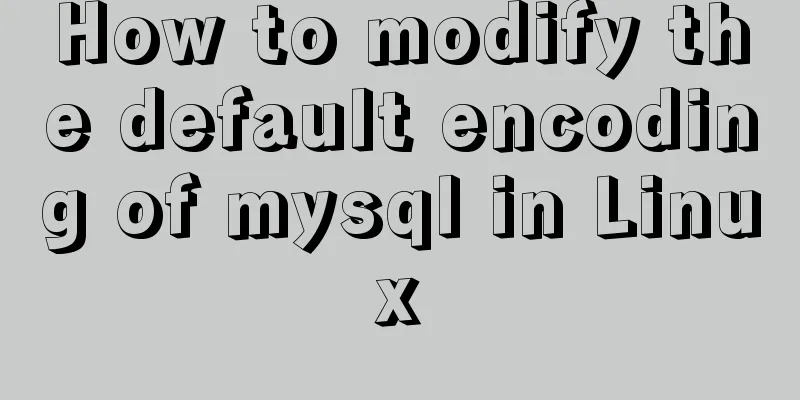Detailed explanation of the principle and usage of MySQL views

|
This article uses examples to illustrate the principles and usage of MySQL views. Share with you for your reference, the details are as follows: In this article:
Release date: 2018-04-13 What is a View:
Create a view:
Replenish:
Check out the view:
View modification:
create view user_view as select * from user; alter view user_view as select username,money from user; Replenish:
Deleting a view:
Data operations of the view:
View data view:
Data insertion into the view:
View data modification:
Deleting data from a view:
Readers who are interested in more MySQL-related content can check out the following topics on this site: "MySQL query skills", "MySQL transaction operation skills", "MySQL stored procedure skills", "MySQL database lock related skills summary" and "MySQL common function summary" I hope this article will be helpful to everyone's MySQL database design. You may also be interested in:
|
<<: Two ways to install the Linux subsystem in Windows 10 (with pictures and text)
>>: This article will show you how to use Vue 3.0 responsive
Recommend
Detailed explanation of the principles and implementation methods of Mysql account management
This article uses examples to illustrate the prin...
Vue code highlighting plug-in comprehensive comparison and evaluation
Table of contents Comprehensive comparison From t...
Detailed steps to deploy SpringBoot projects using Docker in Idea
Preface Project requirements: Install the Docker ...
Docker packages the local image and restores it to other machines
1. Use docker images to view all the image files ...
Details about the like operator in MySQL
1. Introduction When filtering unknown or partial...
Installation process of MySQL5.7.22 on Mac
1. Use the installation package to install MySQL ...
Detailed tutorial on installation and configuration of compressed version of MySQL database
Table of contents 1. Download MySQL 2. Unzip the ...
The difference and reasons between the MySQL query conditions not in and in
Write a SQL first SELECT DISTINCT from_id FROM co...
Detailed explanation of commonly used CSS styles (layout)
Compatible with new CSS3 properties In CSS3, we c...
How to prevent iframe from jumping to the page in HTML and use iframe to embed WeChat web version in the page
I just want to make a small thing that combines w...
Summary of some of my frequently used Linux commands
I worked in operations and maintenance for two ye...
CSS screen size adaptive implementation example
To achieve CSS screen size adaptation, we must fi...
A brief discussion on the underlying principle of mysql join
Table of contents join algorithm The difference b...
How to query data from multiple unrelated tables and paging in Mysql
Mysql multiple unrelated tables query data and pa...
Detailed explanation of MySQL's MERGE storage engine
The MERGE storage engine treats a group of MyISAM...









